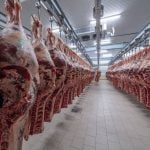
Practical Tips

Liming and soil acidity
A limed acre will maintain a pH increase lasting 10-15 years, maybe more

Soil fertility, revisited
Practical Research: The history of crop production on the Prairies was one of nutrient extraction at an alarming pace

Ergot-free rye production
Practical Research: Growing it in soils with adequate levels of available copper is one way to go

Nitrogen, nitrates and nitrites
Know the names and natures of the nutritious and noxious

Let’s close the circuit on what leads to ergot
Practical Research: The solution to the problem for wheat, barley and oat growers is very well documented

How Prairie fruits fared in 2024
Practical Research: Past assessments show fruit trees do best on northwest- or northeast-facing slopes
Memories of a great Albertan
Practical Research: Fifteen years after his passing, Joseph Gurba's long reach through the province’s farming history remains

Where species conservation was the aim of the game
Practical Research: The Alberta Game Farm was the visionary innovation of a remarkable Canadian

Perceptions and misconceptions versus realities in agriculture
Practical Research: In the court of public opinion, the drama can fog the facts

Canola in the U.S. South
Practical Research: Introducing massive acreage of new crops in established growing areas can put both new and established crops at risk


